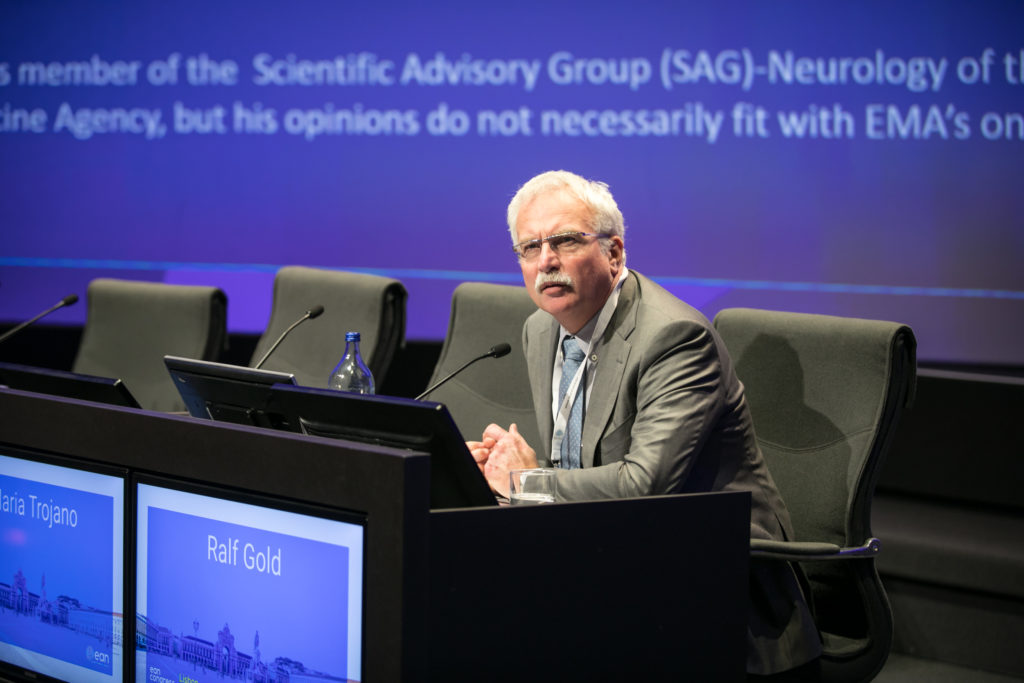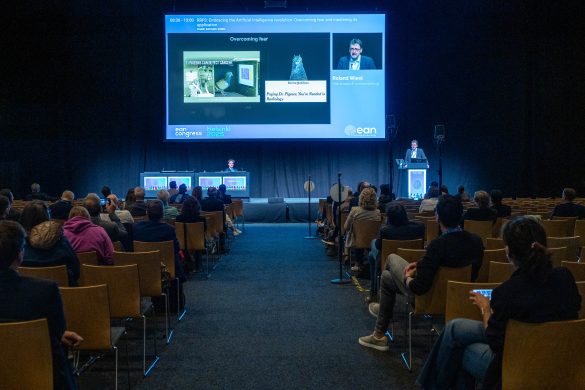Symposium 7: A new look at the neuropathogenesis of multiple sclerosis
June 19, 2018
By Tom Jenkins
The field of multiple sclerosis (MS) has been revolutionized over the last 20 years by exponential growth in therapeutic options, driven by an improved understanding of immunopathogenesis. In this symposium, four experts in the field took us through recent contributions towards this improved understanding and the therapeutic advances that have resulted, through different perspectives.

Prof. Gold started by discussing the interaction between genetics and environment in terms of risk of MS, with approximately 70% of the variance still thought to be environmental. Norwegian epidemiological data published in the 1950s found a reduced prevalence of MS in coastal regions relative to inland areas, thought to be due to a dietary effect. Both dietary salt and fatty acid content are now considered important, and appear to act through modulating the inflammatory T cell phenotype, and through changes to the gut microbiome. In particular, sodium propionate shows promise in modulating T regulatory activity in both mouse models and people with MS, and a clinical trial is planned.
Prof. Montalban next described the plethora of monoclonal antibody therapies now available to target B cell pathology in MS, initially rituximab, which led on to the pivotal ORCHESTRA trial of ocrelizumab. This monoclonal showed proof of efficacy in relapsing-remitting MS, but also a (first) disease-modifying effect in early primary progressive MS, albeit of a relatively modest degree (24% reduction in disease progression compared with placebo). Ofatumumab is the next anti-B cell agent under investigation, delivered subcutaneously rather than intravenously. The field continues to expand.
 Prof. Massacesi then explained that inflammation persists well beyond gadolinium enhancement, continues behind a subsequently repaired blood-brain barrier, and considered the implications for therapeutics in terms of lipophilic structure. He emphasized that axonal damage occurs early, represents the substrate for disability, and hypothesized that early aggressive treatment of inflammation might prevent future neurodegeneration and gliosis.
Prof. Massacesi then explained that inflammation persists well beyond gadolinium enhancement, continues behind a subsequently repaired blood-brain barrier, and considered the implications for therapeutics in terms of lipophilic structure. He emphasized that axonal damage occurs early, represents the substrate for disability, and hypothesized that early aggressive treatment of inflammation might prevent future neurodegeneration and gliosis.
Dr. Chard then considered the contribution that  advances in magnetic resonance imaging have made to drive therapeutic development. Using examples of various techniques applied by the Queen Square group and others all around the world, he highlighted recent insights into disease mechanisms, which include the early and extensive involvement of grey matter, the presence of ongoing inflammation in lesions that might previously have been considered inactive, and the presence of gradients of damage in periventricular and cortical regions, raising the intriguing possibility of a role for a pathogenic intrathecal factor.
advances in magnetic resonance imaging have made to drive therapeutic development. Using examples of various techniques applied by the Queen Square group and others all around the world, he highlighted recent insights into disease mechanisms, which include the early and extensive involvement of grey matter, the presence of ongoing inflammation in lesions that might previously have been considered inactive, and the presence of gradients of damage in periventricular and cortical regions, raising the intriguing possibility of a role for a pathogenic intrathecal factor.
This symposium highlighted the rapidly evolving nature of current research in MS and indicated that the neurologists armamentarium against this disease is likely to continue to be further expanded and refined, with resulting benefits for patients.













